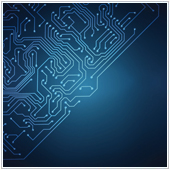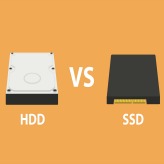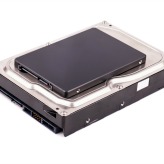 Virtualization is the act of moving a physical component or bit of software from a physical environment to a digital one that’s normally delivered over a network. This technology has become one of the most sought after tech improvements of the past decade, especially among small- to medium-sized businesses (SMBs). The only problem is, virtualization can be complicated, not to mention confusing because of its esoteric terminology. To make things easier, check out this glossary of 10 common virtualization terms.
Virtualization is the act of moving a physical component or bit of software from a physical environment to a digital one that’s normally delivered over a network. This technology has become one of the most sought after tech improvements of the past decade, especially among small- to medium-sized businesses (SMBs). The only problem is, virtualization can be complicated, not to mention confusing because of its esoteric terminology. To make things easier, check out this glossary of 10 common virtualization terms.
1. Virtual machine (VM)
You will often hear virtualization experts discuss the term VM. What they are talking about is the virtual machine. VMs are essentially virtual representations of the computer on your desk. They can do everything a physical machine does, only everything is virtual and usually delivered over a network connection.
Because VMs are software-based, you can often run more than one VM on the same physical machine. This could be two separate versions of Windows running at the same time, or even running a different operating system (OS), say Windows on your MacBook.
2. Virtual server
A virtual server is a specific type of VM running in a virtual environment. A common setup many offices use is to have one physical server on-site. This server hosts separate virtual servers that, in turn, host different services like email, networking, and storage, among others.
Other businesses choose to rely completely on virtual servers. This is where another company hosts the servers delivered to you over the internet. This way, virtual servers appear to be present on the network just like physical ones.
3. Virtual desktop
Much like the virtual server, the virtual desktop is a specific type of VM. In this case, it is a virtually delivered version of an operating system like Windows, Linux, or even macOS.
Since the advent of virtual desktops, the idea that companies have to limit a machine to its OS has become irrelevant. For example, if you own a Mac and need to access a Windows-based program, you could set up a virtual desktop that runs Windows.
4. Hypervisor
The hypervisor is essentially a small OS that enables virtualization. It takes physical hardware resources and combines them into a platform delivered virtually to one or many users.
5. Host system
The host system, also referred to as the parent, is where the physical hardware and software are installed. These physical components are then copied by the hypervisor and delivered in a virtual state to the user. If you are creating a virtual desktop environment, then the host system will have the desktop’s OS installed on it, along with the necessary software.
6. Guest system
The guest system, also referred to as the child, is where the VM is accessed. From the example above, the OS installed on the host machine is replicated by the hypervisor and the copy is then delivered to the user.
The user can interact with the OS just as they would with the physical host machine, because the guest system is an exact copy of the host. The guest machine, in contrast, is virtual instead of physical.
7. Virtual Infrastructure
By combining a bunch of different types of VMs together into one solution such as hardware, storage, desktops, and servers, a virtual infrastructure is formed.
This is ideal for organizations looking for an entirely virtualized solution. In this setup, the whole IT infrastructure is virtualized and combined into one solution. Many companies look for a solution like this because it reduces the need for on-premises hardware, while making it easier for an IT partner to manage.
8. P2V
P2V, or physical-to-virtual, refers to the act of migrating a physical system to a virtual one. A common example is the merging of physical servers into a virtual environment hosted on one server.
9. Snapshot
A snapshot is an image of the state of the virtual machine at a specific point of time. This includes all of the data, configurations, and even windows or programs open at that certain moment. Snapshots are like the save button on video games — they save your progress. When you next load up the VM, your data, programs, and configurations will be right where you left them.
Snapshots are also kept in case something goes wrong with the VM. Then, you can easily revert back to an older snapshot, one that was taken before the problem occurred.
10. Clone
The action of taking one VM and creating an exact copy that can be used by another computer or user.
If you are looking to learn more about virtualization, contact us today to see how we can help.

 Virtualization — the process of creating a software version of a hardware component such as a server — is one of the most beneficial tech solutions for small organizations. For many business owners and managers, however, this is a vastly complex concept that comes with some pretty heavy jargon. To help, we have come up with a glossary of 10 virtualization terms every owner, manager, and employee should be aware of.
Virtualization — the process of creating a software version of a hardware component such as a server — is one of the most beneficial tech solutions for small organizations. For many business owners and managers, however, this is a vastly complex concept that comes with some pretty heavy jargon. To help, we have come up with a glossary of 10 virtualization terms every owner, manager, and employee should be aware of. Virtualization, or the act of moving physical systems to a digital environment, has become one of the most sought-after tech solutions by small- to medium-sized businesses (SMBs). While the technology is popular, it has many potentially confusing terms associated with it. To help, we have created a short glossary of 10 popular virtualization terms.
Virtualization, or the act of moving physical systems to a digital environment, has become one of the most sought-after tech solutions by small- to medium-sized businesses (SMBs). While the technology is popular, it has many potentially confusing terms associated with it. To help, we have created a short glossary of 10 popular virtualization terms. Medical professionals should always strive to give the utmost care to their patients, not only through proper diagnosis and treatment but with the best ancillary healthcare services as well. These are improved by the use of electronic medical records (EMRs). EMRs eliminate paper charts by digitally storing patients’ medical history and treatment. EMR systems lead to major health care savings and reduce medical errors. To get your healthcare practice ready for an EMR system, here are considerations to take note of.
Medical professionals should always strive to give the utmost care to their patients, not only through proper diagnosis and treatment but with the best ancillary healthcare services as well. These are improved by the use of electronic medical records (EMRs). EMRs eliminate paper charts by digitally storing patients’ medical history and treatment. EMR systems lead to major health care savings and reduce medical errors. To get your healthcare practice ready for an EMR system, here are considerations to take note of. You and your patients can benefit from having an electronic medical record (EMR) software system in your clinic, healthcare facility, or hospital. It significantly helps healthcare professionals keep a more comprehensive and detailed record of all their patients’ medical information and treatment procedures. However, with so many EMR vendors out there, choosing the best EMR to suit your practice can be overwhelming. Here are some criteria to consider when selecting an EMR system.
You and your patients can benefit from having an electronic medical record (EMR) software system in your clinic, healthcare facility, or hospital. It significantly helps healthcare professionals keep a more comprehensive and detailed record of all their patients’ medical information and treatment procedures. However, with so many EMR vendors out there, choosing the best EMR to suit your practice can be overwhelming. Here are some criteria to consider when selecting an EMR system. Electronic medical records (EMRs) digitally store a patient’s medical history and treatment. EMRs eliminate paper charts and allow patients to have a single electronic chart that can be accessed within one healthcare organization. It allows medical professionals to provide more efficient and precise care. To ensure that your healthcare facility is able to provide all the benefits of an EMR system, consider these factors.
Electronic medical records (EMRs) digitally store a patient’s medical history and treatment. EMRs eliminate paper charts and allow patients to have a single electronic chart that can be accessed within one healthcare organization. It allows medical professionals to provide more efficient and precise care. To ensure that your healthcare facility is able to provide all the benefits of an EMR system, consider these factors. Buyers used to have a limited choice for what kind of storage they got with their laptop or desktop PCs. With the invention of the solid state drive (SSD), you can now choose to configure your system with either the traditional hard disk drive (HDD), SSD, or in some cases both. So what’s the better pick between the two? Here, we compare the two so you can decide for yourself which one best fits your needs.
Buyers used to have a limited choice for what kind of storage they got with their laptop or desktop PCs. With the invention of the solid state drive (SSD), you can now choose to configure your system with either the traditional hard disk drive (HDD), SSD, or in some cases both. So what’s the better pick between the two? Here, we compare the two so you can decide for yourself which one best fits your needs. People who buy desktop or laptop computers today need to choose between getting a solid state drive (SSD) or a hard disk drive (HDD) as a primary storage component for their device. But which one is the better choice? In this article, we outline the differences between SSD and HDD, as well as their pros and cons, so you can make the right decision for your next purchase.
People who buy desktop or laptop computers today need to choose between getting a solid state drive (SSD) or a hard disk drive (HDD) as a primary storage component for their device. But which one is the better choice? In this article, we outline the differences between SSD and HDD, as well as their pros and cons, so you can make the right decision for your next purchase. The hard disk drive (HDD) has been the primary storage device for desktop computers and laptops for a long time. But with the invention of solid state drive (SSD) technology, consumers are now able to choose between the two. So which one should you go for — HDD or SSD? Read on to find out.
The hard disk drive (HDD) has been the primary storage device for desktop computers and laptops for a long time. But with the invention of solid state drive (SSD) technology, consumers are now able to choose between the two. So which one should you go for — HDD or SSD? Read on to find out. To succeed in today’s technology-driven world, healthcare facilities now have to provide convenience alongside top-notch patient care. Online scheduling makes it easy for patients to book their medical appointments.
To succeed in today’s technology-driven world, healthcare facilities now have to provide convenience alongside top-notch patient care. Online scheduling makes it easy for patients to book their medical appointments.  While quality of care is a major factor when patients choose a healthcare facility, convenience is now becoming another key consideration. Online scheduling, in particular, has become more and more important in selecting a healthcare provider.
While quality of care is a major factor when patients choose a healthcare facility, convenience is now becoming another key consideration. Online scheduling, in particular, has become more and more important in selecting a healthcare provider. Top-notch care is no longer the sole criterion patients have for choosing which healthcare facility to go to. They now also look for the convenience that online scheduling delivers.
Top-notch care is no longer the sole criterion patients have for choosing which healthcare facility to go to. They now also look for the convenience that online scheduling delivers.